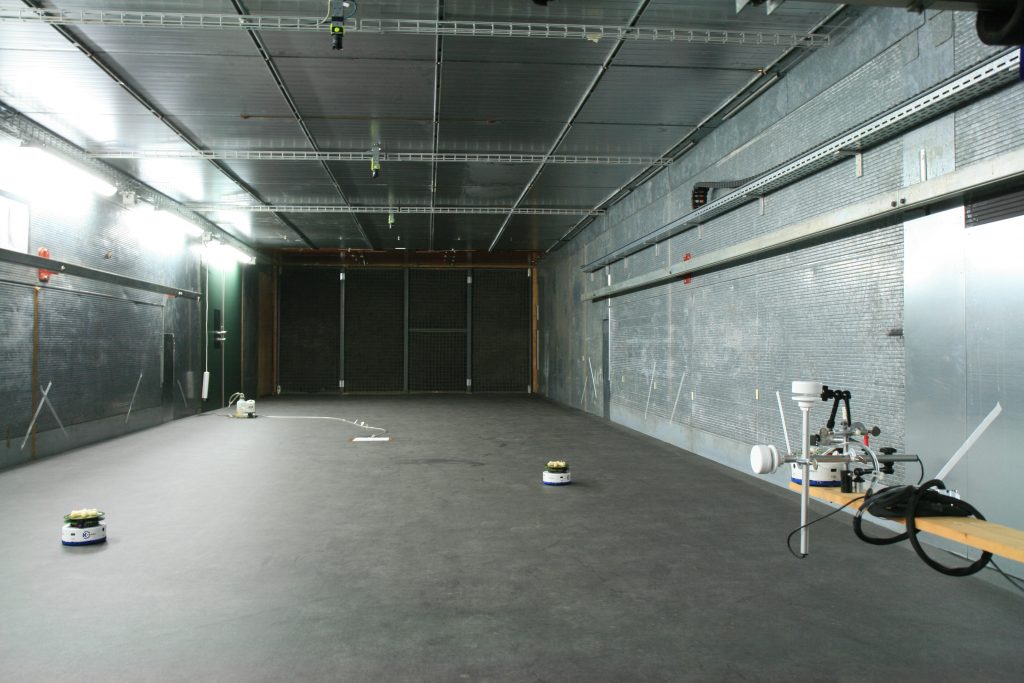
Finding sources of airborne chemicals with mobile sensing systems finds applications across the security, safety, domestic, medical, and environmental domains. That is why it has been subject to numerous academic research works in the past 20 years. In this project, we aim to tackle this issue by methodically analyzing the problem of odor source localization under increasingly complex environmental conditions. Furthermore, since natural dispersal processes are inherently three-dimensional, we plan to extend the applicability of odor source localization techniques to 3D scenarios using multiple and possibly heterogeneous sensing assets. This work will be carried out by leveraging powerful and flexible laboratory tools such as a high-fidelity simulator, a large wind tunnel, and a flying arena equipped with a motion capture system. The focus of this project is on design and evaluation of probabilistic algorithms for a collaborative team of robots.
Team and Collaborators
Research Period and Sponsors
This project is funded by the Swiss National Science Foundation under grant 200021_153310/1 from August 2015 to October 2017 and under grant 200020_175809/1 from November 2017 to October 2021.
Related Student Projects and Internships
- DISAL-SP121: Axel Nilsson, Particle-based Probabilistic Algorithm for Odor Source Localization in Obstacle Full Realistic Environment
- DISAL-SP122: Mickaël Salamin, Probabilistic algorithms for odor source localization using a distributed system
- DISAL-SP117: Juraj Korcek, Deployment of a Wireless Sensor Networkfor Odor Distribution Mapping
- DISAL-SP113: Lucie Houel, Particle Filter Algorithm for Odor source Localization in realistic environment
- DISAL-SP110: Quentin Golay, Odor Source Localization with a Drone in a Realistic Environment
- DISAL-MP35: Danjiao Ma, Path Planning for Odor Distribution Mapping
- DISAL-SP107: Vincent Demotz, Particle Filter Algorithm for Odor Source Localization
- DISAL-SP104: Insaf Nejjar, Adapting a Quadrotor to Wind Tunnel Experiments
- DISAL-SP102: Julian Ruddick, Developing Infotaxis Algorithm for Odor Source Localization in 3-D
- DISAL-SP100: Pierre Kibleur, 3D Bio-inspired odour source localization
- DISAL-SP99: Nikita Lazarev, Designing an Embedded Electronic Device for Gas Sensing
- DISAL-SU27: Danjiao Ma, Path Planning Algorithms for Odor Distribution Mapping: Real World Experiments on Khepera IV Robot
- DISAL-MP31: Rémi Laure, Evaluating Probabilistic Algorithms for Finding Odour Sources using Khepera IV Robots
- DISAL-MP30: Romain Emery, Performance Evaluation of Bio-Inspired Algorithms in Odour Source Localization
- DISAL-MP29: Thierry Dubosson, Studying the Impact of the Propeller of a Quadrotor on Gas Concentration Measurements using a Fast Chemical Sensor (miniPID)
- DISAL-SP81: Romain Jean-Paul Emery, Odor Plume Mapping Using a Mobile Sensor Network Through Kriging
Videos
Publications
Please note that the publication lists from Infoscience integrated into the EPFL website, lab or people pages are frozen following the launch of the new version of platform. The owners of these pages are invited to recreate their publication list from Infoscience. For any assistance, please consult the Infoscience help or contact support.